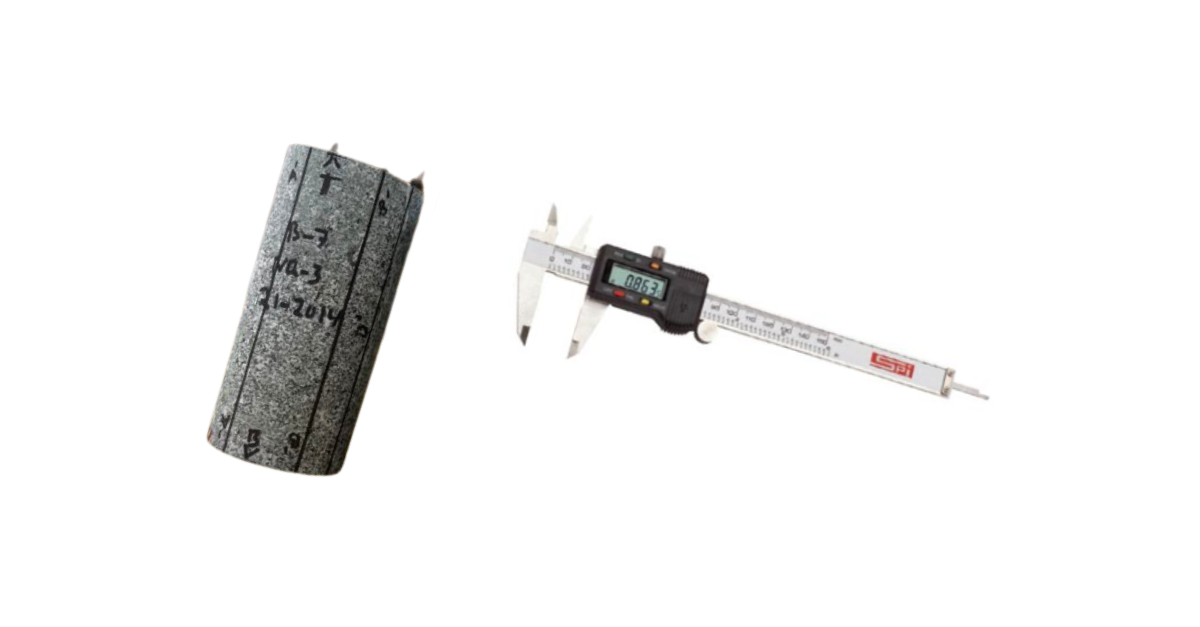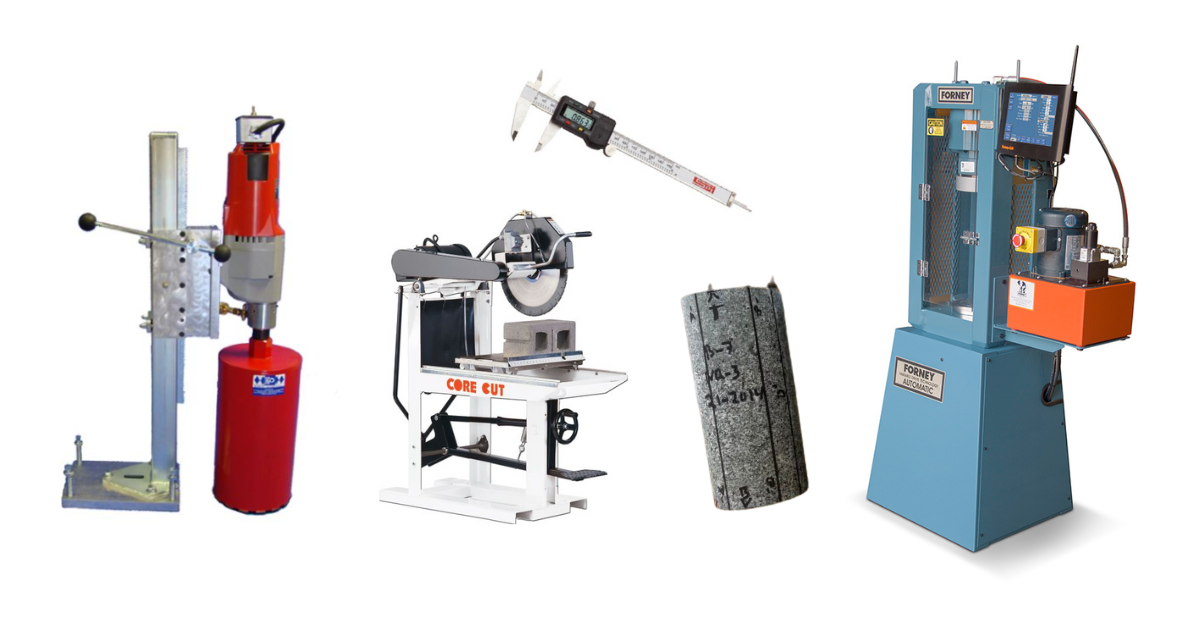In projects involving tunnels, slopes, foundations, or underground excavations, engineers need to understand how natural rock will behave under tensile stress. To do this, material testers drill cylindrical samples to test intact rock core specimens according to ASTM D3967.
In this simple guide, we cover the basics of ASTM D3967:
- Purpose of ASTM D3967: Direct vs. Indirect Tensile Strength
- Recommended Equipment for ASTM D3967
- ASTM D3967 Test Preparation, Procedure & Results
Purpose of ASTM D3967: Direct vs. Indirect Tensile Strength
Intact rock core specimens are cylindrical samples used to assess the true strength of the original rock formation at a construction or excavation site. To test tensile strength, testers can turn to one of two standards: ASTM D2936 for direct tensile strength or ASTM D3967 for indirect tensile strength.
Direct tensile strength measures how much pulling force a rock sample can withstand before breaking.
Despite providing a direct reading, the standard cautions against using it to measure the overall strength of solid rock material. This is because in a direct tensile test, the rock often breaks at its weakest point, whether that’s in the solid rock itself or along a natural crack. If you’re not specifically trying to test those cracks, the results can make the rock seem weaker than it really is. So, the numbers you get from a direct test usually reflect the strength of the weakest part of the rock and should be used conservatively.
Indirect tensile strength, also known as the Brazilian test method, applies compressive force along the diameter of a cylindrical rock core instead of pulling. This causes the rock to fail in tension across the center.
ASTM D3967 favors the method as a desirable alternative to direct tensile strength for a few different reasons:
- Simple: It’s considered easier to perform than direct tensile tests in terms of specimen preparation and test setup.
- Inexpensive: Due to its simplicity, it’s also more cost-effective and practical for routine use.
- Representative: It creates a stress field that includes both tension and compression, better representing field conditions.
RELATED: Testing Compressive Strength & Elastic Moduli of Intact Rock Core (ASTM D7012)
ASTM D3967 includes equipment, specimen preparation, and testing procedures for the splitting tensile strength of intact rock core specimens with flat loading platens.
Recommended Equipment for ASTM D3967
A core drill to drill intact rock core specimens and diamond saw to cut the ends of the specimen so they are parallel.

A caliper to measure specimen diameter and thickness.

A compression testing machine to apply compressive force along the diameter of the intact rock core specimen. The compression machine should be equipped with two opposing hardened steel bearing platens with a Rockwell hardness no less than 58 HRC. ASTM D3967 also recommends a spherical seat that’s lubricated to allow slight tilting and alignment, reducing uneven stress during loading.

The standard also includes guidance on optional equipment:
- False platens: Oil-hardened and ground steel disks that sit between the specimen and main platens to protect equipment and meet flatness specs.
- Load bearing strips: 3 mm thick plywood strips (or equivalent material) placed between the specimen and platens to reduce stress concentration and premature cracking.
With this equipment, you’re ready to conduct a splitting tensile strength test according to ASTM D3967.
ASTM D3967 Test Preparation, Procedure & Results
- Select and prepare at least ten specimens that meet criteria, typically a 54 mm diameter.
- Determine the diameter and thickness of the specimen to the nearest 0.25 mm.
- Mark a diametral line on each end of the specimen to indicate orientation and assist with centering.
- Affix bearing strips (optional) along the marked lines if needed.
- Photograph the specimen before testing to document its initial condition.
- Clean the contact surfaces of the machine’s loading platens to remove any debris.
- Position the specimen so the marked diametral line aligns with the machine’s loading axis, within 1.25 mm of the center.
- Slowly bring the loading platens together until the top platen gently contacts the specimen, applying little or no load.
- Apply compressive force at a constant rate so that failure occurs within 1 to 10 minutes of loading.
- Record the maximum load sustained by the specimen to three significant figures.
- Photograph the specimen after testing to document fracture characteristics.
- Evaluate the break to determine if it is a valid indirect tensile failure.
- Calculate splitting tensile strength (σt) by dividing two times the maximum applied load (P) by the product of pi (π), thickness (t), and diameter (D)
- Formula: σt=2P/πtD
- Record results, including sample and specimen identifying information (project number, sample numbers, project name and location, etc), a physical description of the specimen (rock type, location and orientation of weakness planes, etc), testing dates, specimen measurements, and test data.
ASTM D3967 requires a careful setup, consistent loading, and in-depth record of specimen and test data. With automatic controls and integrated testing software, a Connected Compression Machine can help with all of that by:
- Running pre-test “Smart Checks” to Validating test parameters and measurements with pre-test “Smart Checks”
- Running automatic preload calculations
- Automatically controlling the load rate
- Automatically calculating results and transferring data
Conclusion
ASTM D3967 provides the standard test method for splitting tensile strength of intact rock core. Please review the current ASTM standard and other referenced standards for the most up-to-date guidelines and details.
Forney has the machines, accessories, and software necessary for ASTM D3967. Shop the Forney store today or find your machine.
